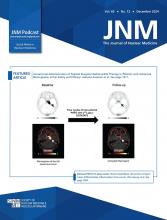Visual Abstract
Abstract
Radiopharmaceutical cocktails have been developed over the years to treat cancer. Cocktails of agents are attractive because 1 radiopharmaceutical is unlikely to have the desired therapeutic effect because of nonuniform uptake by the targeted cells. Therefore, multiple radiopharmaceuticals targeting different receptors on a cell is warranted. However, past implementations in vivo have not met with convincing results because of the absence of optimization strategies. Here we present artificial intelligence (AI) tools housed in a new version of our software platform, MIRDcell V4, that optimize a cocktail of radiopharmaceuticals by minimizing the total disintegrations needed to achieve a given surviving fraction (SF) of tumor cells. Methods: AI tools are developed within MIRDcell V4 using an optimizer based on the sequential least-squares programming algorithm. The algorithm determines the molar activities for each drug in the cocktail that minimize the total disintegrations required to achieve a specified SF. Tools are provided for populations of cells that do not cross-irradiate (e.g., circulating or disseminated tumor cells) and for multicellular clusters (e.g., micrometastases). The tools were tested using model data, flow cytometry data for suspensions of single cells labeled with fluorochrome-labeled antibodies, and 3-dimensional spatiotemporal kinetics in spheroids for fluorochrome-loaded liposomes. Results: Experimental binding distributions of 4 211At-antibodies were considered for treating suspensions of MDA-MB-231 human breast cancer cells. A 2-drug combination reduced the number of 211At decays required by a factor of 1.6 relative to the best single antibody. In another study, 2 radiopharmaceuticals radiolabeled with 195mPt were each distributed lognormally in a hypothetical multicellular cluster. Here, the 2-drug combination required 1.7-fold fewer decays than did either drug alone. Finally, 2 225Ac-labeled drugs that provide different radial distributions within a spheroid require about one half of the disintegrations required by the best single agent. Conclusion: The MIRDcell AI tools determine optimized drug combinations and corresponding molar activities needed to achieve a given SF. This approach could be used to analyze a sample of cells obtained from cell culture, animal, or patient to predict the best combination of drugs for maximum therapeutic effect with the least total disintegrations.
- radiation physics
- radiation therapy planning
- radiobiology/dosimetry
- radionuclide therapy
- metastases
- radiopharmaceutical therapy
Footnotes
Published online Oct. 24, 2024.
- © 2024 by the Society of Nuclear Medicine and Molecular Imaging.








